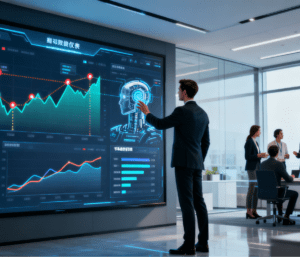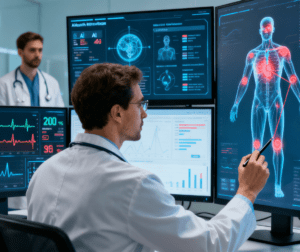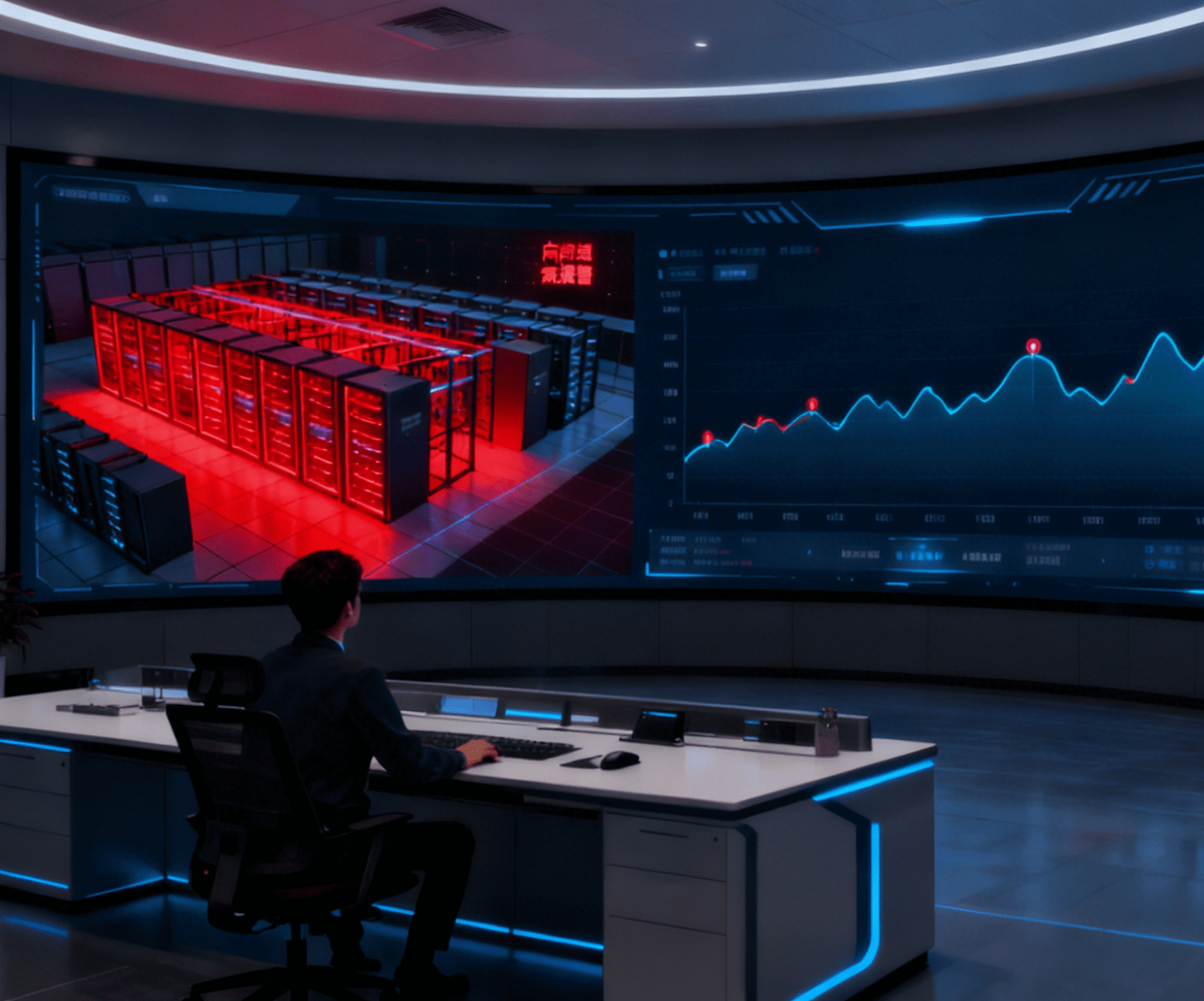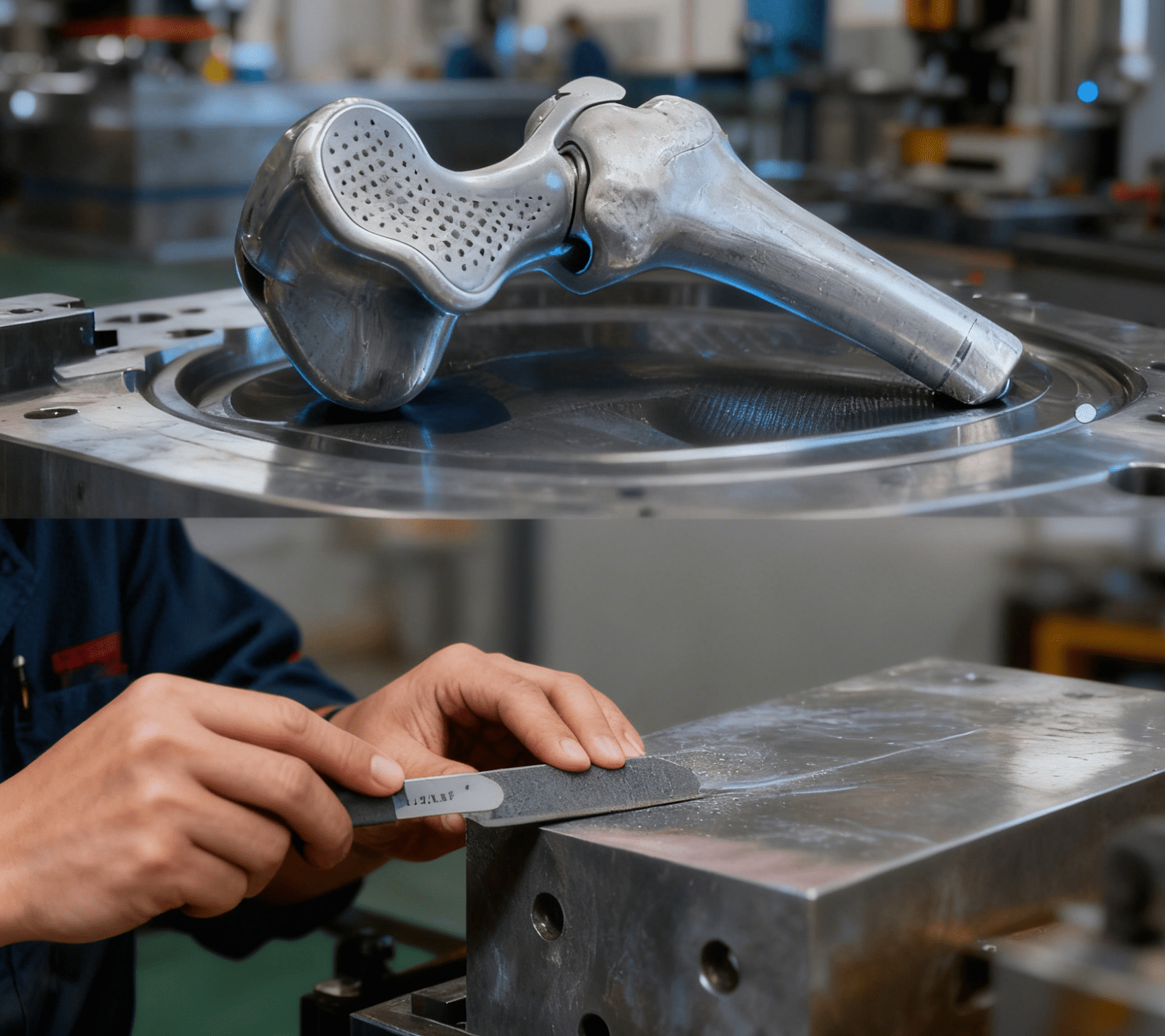
In today’s digital era, enterprises face unprecedented competitive pressures and the rapid pace of market changes. To maintain a leading position in the fierce market competition, enterprises must be able to respond quickly to market changes and make informed decisions. The integration of Artificial Intelligence (AI) and Internet of Things (IoT) technologies is redefining the speed and efficiency of business decision-making, helping enterprises achieve rapid transformation from data to decision-making. This article will explore how AI and IoT enhance enterprises’ operational efficiency, innovation capabilities, and market competitiveness through data-driven decision-making, thereby redefining business speed.
The Integration of AI and IoT: The Foundation of Data-Driven Decision-Making
Definitions of AI and IoT
Artificial Intelligence (AI) refers to technologies that enable computer systems to simulate human intelligence, including machine learning, natural language processing, computer vision, and more. The Internet of Things (IoT), on the other hand, connects various devices and sensors via the Internet to realize data interaction and collaborative work between devices. The integration of the two provides strong technical support for data-driven decision-making.
The Importance of Data
In the modern business environment, data is the core asset for enterprise decision-making. By collecting, analyzing, and utilizing data, enterprises can better understand market demands, customer behaviors, and operational efficiency, thereby making more informed decisions. However, the value of data lies not only in its quantity but also in its quality and analytical capabilities. The combination of AI and IoT technologies can help enterprises extract valuable information from massive amounts of data and realize data-driven decision-making.
The Synergistic Effect of AI and IoT
IoT devices collect real-time data through sensors and transmit it to cloud or edge computing devices. AI algorithms then analyze and process this data to extract valuable information and insights. This synergistic effect not only improves the speed and accuracy of data processing but also enables real-time responses to market changes, supporting rapid decision-making.
How AI and IoT Enhance Business Speed
Real-Time Data Analysis and Decision Support
AI and IoT technologies enable real-time analysis and processing of data. Through machine learning algorithms, enterprises can quickly identify patterns and trends in data, thereby predicting market changes and customer needs in advance. This real-time data analysis capability allows enterprises to make decisions quickly and adjust strategies in a timely manner, thus gaining an advantage in competition.
Process Automation and Efficiency Improvement
AI and IoT technologies can automate business processes. Through intelligent algorithms and Robotic Process Automation (RPA), enterprises can automatically execute repetitive tasks, reduce manual intervention, and improve work efficiency. This automation not only enhances enterprises’ operational efficiency but also reduces human errors and improves data quality.
Predictive Maintenance and Resource Optimization
In the manufacturing and logistics industries, IoT devices can monitor the operating status of equipment in real time. Using AI algorithms, enterprises can predict equipment failures, arrange maintenance in advance, and reduce downtime. Additionally, enterprises can optimize resource allocation through data analysis to improve production efficiency.
Customer Experience Optimization
Through customer data collected by IoT devices, enterprises can better understand customer needs and behavioral patterns. AI algorithms can analyze this data to help enterprises optimize products and services and enhance customer experience. This customer-centric, data-driven strategy not only improves customer satisfaction but also strengthens customer loyalty.

Application Cases of AI and IoT in Different Industries
Manufacturing
In the manufacturing industry, IoT devices can monitor the operating status of production equipment in real time. With AI algorithms, enterprises can predict equipment failures, arrange maintenance in advance, and reduce downtime. Furthermore, enterprises can optimize production processes through data analysis to improve production efficiency. For example, General Electric (GE) has realized predictive maintenance of equipment using IoT and AI technologies, reducing equipment downtime and improving production efficiency. Another typical application lies in precision component assembly: in the automotive and home appliance industries, automatic sealing ring feeding and assembly systems integrated with AI and IoT have become game-changers. IoT sensors installed on feeding modules real-time track the supply of sealing rings, monitor the pressure and position parameters during assembly, and transmit data to edge computing nodes. AI algorithms then analyze these data to dynamically adjust the feeding speed and assembly force—for instance, automatically reducing force for fragile sealing materials to avoid damage, and optimizing feeding intervals to match the rhythm of the entire production line. This integration not only reduces defect rates caused by manual operation by over 40% but also cuts down equipment idle time by 25%, significantly accelerating production cycles and reflecting how AI and IoT redefine manufacturing speed.
Retail
In the retail industry, IoT devices can collect customer behavior data, such as shopping paths and dwell times. AI algorithms enable enterprises to analyze this data to optimize store layouts and product displays, thereby enhancing customer experience. In addition, enterprises can predict customer needs through data analysis to optimize inventory management. For instance, Walmart has achieved real-time inventory monitoring and optimized management using IoT and AI technologies, improving operational efficiency.
Healthcare
In the healthcare field, IoT devices can monitor patients’ health conditions in real time. Using AI algorithms, doctors can analyze patient data to predict disease risks in advance and develop personalized treatment plans. This data-driven medical model not only improves medical efficiency but also enhances the patient experience. For example, IBM Watson uses AI technology to help doctors analyze patient data and provide personalized treatment recommendations.
Financial Services
In the financial services sector, AI and IoT technologies can be used for risk assessment and fraud detection. By analyzing customers’ transaction data and behavioral patterns, enterprises can identify fraudulent activities in real time and reduce risks. Moreover, enterprises can optimize investment portfolios through data analysis to improve returns. For example, JPMorgan Chase has automated risk assessment and fraud detection using AI technology, improving operational efficiency.
Challenges and Countermeasures for AI and IoT
Data Security and Privacy Protection
With the widespread application of IoT devices, data security and privacy protection have become major challenges. Enterprises need to adopt encryption technologies to ensure the security of data transmission and storage, preventing unauthorized access and tampering of data. Additionally, enterprises must comply with relevant laws and regulations to protect customer privacy.
Technical Standards and Interoperability
IoT devices come from different suppliers, leading to differences in their technical standards and interoperability. To address this issue, the industry needs to develop unified technical standards to ensure compatibility between different devices. Furthermore, enterprises should establish open platforms to promote data sharing between devices.
Talent Shortage
The rapid development of AI and IoT technologies has led to a shortage of relevant talents. Enterprises need to strengthen talent cultivation and recruitment to build professional technical teams. In addition, enterprises can cooperate with universities and research institutions to carry out industry-academia-research cooperation projects.
Future Development Trends
Intelligence and Automation
With the development of AI and IoT technologies, enterprises will become more intelligent and automated. Through intelligent algorithms and Robotic Process Automation (RPA), enterprises can automatically execute complex business processes to improve efficiency. Additionally, enterprises can optimize decision-making processes through data analysis to achieve intelligent management.
Integration of Edge Computing and Cloud Computing
The integration of edge computing and cloud computing will become a future development trend. Through edge computing, enterprises can perform data preprocessing at the device end to reduce data transmission volume. Through cloud computing, enterprises can realize centralized data storage and analysis to improve data processing capabilities. This integration not only increases data processing speed but also reduces costs.
AI Ethics and Sustainable Development
With the widespread application of AI and IoT technologies, issues related to ethics and sustainable development will receive more attention. Enterprises need to consider ethical issues in technology application to ensure the fairness and transparency of technology. Furthermore, enterprises should achieve sustainable development through technological innovation to reduce environmental impact.
Conclusion
The integration of AI and IoT technologies is redefining business speed. Through real-time data analysis, process automation, predictive maintenance, and customer experience optimization, enterprises can respond quickly to market changes and make informed decisions. Although facing challenges such as data security, technical standards, and talent shortage, with technological innovation and policy support, AI and IoT will play an even more important role in future business. In the future, with the development of intelligent, automated, and edge computing technologies, enterprises will become more efficient and sustainable.




















